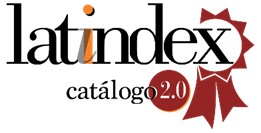The role of oral feedback in meaning co-making in a dynamic geometry environment
DOI:
https://doi.org/10.48489/quadrante.22569Keywords:
oral feedback, dynamic geometry, meaning co-makingAbstract
This article aims to describe and understand the feedback that orally arises among students and how it connects to meaning making, during the resolution of tasks, in collaborative work, in a dynamic geometry environment (DGE). The conceptual framework is based on oral feedback, collaborative work and meanings co-making in DGEs. Assuming an interpretative position, this investigation adopts a qualitative methodology of case study with two students. GeoGebra was used with regularity in a class, throughout the 7th and 8th years of schooling regarding Geometry. Here I present and analyze two episodes: one from the initial phase and another from the final phase of the study. The analysis of the episodes focuses on oral feedback between students and meanings co-making. As the main conclusion of this study, I highlight the possibility of understanding the potential of oral feedback and the way that it alters meaning co-making, as the students dominate the DGE. Empirically, it was possible to detect changes in intentionality on students’ oral feedback, concerning different moments of negotiation, understanding, and sharing of meanings.
References
Allal, L. (1986). Estratégias de avaliação formativa: Concepções psicopedagógicas e modalidades de aplicação. In L. Allal, J. Cardinet, & P. Perrenoud (Orgs.), A Avaliação num Sentido Diferenciado (pp. 175-209). Coimbra: Almedina.
Allal, I. (1988). Vers un élargissement de la pédagogie de maîtrise. In M. Huberman (Org.), Assurer la réussite des apprentissages scolaires? Les propositions de la pédagogie de maîtrise (pp. 87-126). Neuchatel: Delachaux & Niestlé.
Alrø, H., & Skovsmose, O. (2004). Dialogue and learning in mathematics education: Intention, reflection, critique. Dordrecht: Kluwer Academic Publishers.
Andrade, H., & Brookhart, S. (2019). Classroom assessment as the co-regulation of learning. Assessment in Education: Principles, Policy & Practice. https://doi.org/10.1080/0969594X.2019.1571992
Andriessen, J., Baker, M., & Suthers, D. (Eds.). (2003). Arguing to learn: Confronting cognitions in computer-supported collaborative learning environments. Dordrecht, Netherlands: Kluwer Academic Publishers.
Askew, S., & Lodge, C. (2000). Gifts, ping-pong and loops – linking feedback and learning. In S. Askew (Ed.), Feedback for learning (pp. 1-18). London: Routledge Falmer.
Beatty, R., & Geiser, V. (2010). Technology, communication, and collaboration: re-thinking communities of inquiry, learning and practice. In C. Hoyles & J.-B. Lagrange (Eds), Mathematics Education and Technology – Rethinking the terrain – The 17th ICMI Study (pp. 251-286). London: Springer.
Black, P., & William, D. (2010). A pleasant surprise. Phi Delta Kappan, 92(1), 47-48.
Briten, E., Stevens, S., & Treby, N. (2012). Using talk for learning in science and mathematics. In D. Jones & P. Hodson (eds.), Unlocking Speaking and Listening (pp. 19-34). London & New York: Routledge.
Brousseau, G. (1997). Theory of didactical situations in mathematics: Didactique des Mathématiques, 1970–1990. Dordrecht, The Netherlands: Kluwer.
Carnell, E. (2000). Dialogue, discussion and feedback – views of secondary school students on how others help their learning. In S. Askew (ed.), Feedback for learning (pp. 46-62). London: Routledge Falmer.
Chen, C. (2008). The effectiveness of computer supported collaborative learning on helping tasks in a Mathematics Course. Malacca, Malaysia: Proquest LLC.
Chi, M. (1996) Constructing self-explanations and scaffolded explanations in tutoring. Applied Cognitive Psychology, 10, 10-49.
Claire, H., & Salmon, P. (2020). Classroom Collaboration. London: Routledge.
Coelho, M., & Saraiva, M. (2000). Tecnologias no ensino/aprendizagem da geometria. In Atas do Encontro Ensino e Aprendizagem da Geometria (pp. 35-60). Fundão: Secção de Educação Matemática - Sociedade Portuguesa de Ciências da Educação. http://spiem.pt/DOCS/ATAS_ENCONTROS/atas_EIEM_2000.pdf
Dillenbourg, P. & Evans, M. (2011). Interactive tabletops in education. International
Journal of Computer Supported Collaborative Learning, 6, 491–514.
Duarte, M., & Rezende F. (2007). Construção compartilhada de significados na interação colaborativa de estudantes com um sistema hipermídia de biomecânica. In Atas do VI Encontro Nacional de Pesquisa em Educação em Ciências – VI ENPEC. Florianópolis: ABRAPEC.
Faggiano, E., & Ronchi (2011). GeoGebra as a methodological resource. In L. Bu & R. Schoen (Eds.), Model-centered Learning – pathways to mathematical understanding using GeoGebra (pp. 183-189). Rotterdam: Sense Publishers.
Hodgen, J., & Webb M. (2008). Questioning and dialogue. In S. Swaffield (Ed.), Unlocking assessment – understanding for reflection and application (pp. 7389). London: Routledge.
Hoyles, C., & Noss, R. (1992). A pedagogy for mathematical microworlds. Educational Studies in Mathematics, 23(1), 31-57.
Jeong, H., Hmelo-Silver, C., & Jo, K. (2019). Ten years of computer-supported collaborative learning: A meta-analysis of CSCL in STEAM education during 2005-2014. Educational Research Review, 28, 100284. https://doi.org/10.1016/j.edurev.2019.100284
Lemke, J. (1990). Talking science: Language, learning, and values. Norwood, NJ: Ablex.
Lima, J. P. (1989). Linguagem e acção – da filosofia analítica à linguística pragmática. Lisboa: Apáginastantas.
Pfister, H. R. (2005). How to support synchronous net-based learning discourses: Principles and perspectives. In R. Bromme, F. W. Hesse, & H. Spada (Eds.), Barriers and biases in computer mediated knowledge communication: And how they may be overcome (pp. 39–58). Dordrecht, Netherlands: Kluwer.
Pimm, D. (1987). Speaking mathematically: Communication in mathematics classrooms. London: Routledge & Kegan Paul.
Pollock, J. (2012). Feedback – The hinge that joins teaching & learning. Thousand Oaks: Corwin.
Ramaprasad, A. (1983). On the definition of feedback. Behavioral Science, 28(1), 4-13.
Roschelle, J., & Teasley, S. (1995). The construction of shared knowledge in collaborative problem solving. In C. O'Malley (Ed.), Computer-supported collaborative learning (pp. 69-197). Berlin, Germany: Springer Verlag.
Rodrigues, M. M. T. (1997). A aprendizagem da matemática enquanto processo de construção de significado mediada pela utilização do computador (Tese de mestrado). Lisboa: APM.
Saha, R., Ayub, A., & Tarmizi, R. (2010). The effects of GeoGebra on mathematics achievement: En-lightening coordinate geometry learning. Procedia Social and Behavioural Sciences, 8, 686-693.
Santos, L. (2002). Auto-avaliação regulada: porquê, o quê, e como? In P. Abrantes & F. Araújo (Coords.), Avaliação das aprendizagens (pp. 77-84). Lisboa: Ministério da Educação, DEB
Santos-Trigo, M. (2004). The role of technology in students’ conceptual constructions in a sample case of problem solving. Focus on Learning Problems in Mathematics, 26(2), 1-17.
Serrazina, M. L. (1995). Ensinar/aprender matemática. In Actas do ProfMat 95 (pp. 3341). Lisboa: APM.
Sim-Sim, I., Silva A. C., & Nunes, C. (2008). Linguagem e comunicação no jardim-de infância. Lisboa: Ministério da Educação - Direção Geral de Inovação e de Desenvolvimento Curricular.
Sinclair, M. P. (2005). Peer interactions in computer lab: Reflections on results of a case study involving web-based dynamic geometry sketches. Journal of Mathematical Behavior, 24, 89-107.
Smith, I. (2007). Assessment & learning pocketbook. Alresford, Hampshire: Teacher’s Pocketbooks.
Smith, M., & Stein, M. (2011). Practices for orchestrating productive mathematics discussions. Thousand Oaks: Corwin and The National Council of Teachers of mathematics.
Stahl, G. (2016). Constructing dynamic triangles together: The development of mathematical group cognition. Cambridge, UK: Cambridge University Press.
Stahl, G., Koschmann, T., & Suthers, D. (2006). Computer-supported collaborative learning: an historical perspective. In R. K. Sawyer (Ed.), Cambridge handbook of the learning sciences (pp. 409–426). Cambridge, MA: Cambridge University Press.
Steffe, L. P., & Thompson, P. W. (2000). Teaching experiment methodology: Underlying principles and essential elements. In R. Lesh & A. E. Kelly (Eds.), Research design in mathematics and science education (pp. 267- 307). Hillsdale, NJ: Erlbaum.
Swaffield, S. (2008). The central process in assessment for learning. In S. Swaffield (Ed.), Unlocking assessment – Understanding for reflection and application (pp. 57-72). New York: Routledge.
Tepper, A., & Flynn, P. (2020). Learner-focused feedback: 19 strategies to observe for impact. Thousand Oaks: Corwin - A Sage Company.
Topping, K. (2005). Trends in peer learning. Educational Psychology, 25(6), 631-645.
Voigt, J. (1994). Negotiation of mathematical meaning and learning mathematics. Educational Studies in Mathematics, 26, 275-298.
Webb, M. E., & Jones, J. (2006). Assessment for learning transforming classroom practice?. Paper presented at the British Educational Research Association Annual Conference. University of Warwick.
Wei, C., & Ismail, Z. (2010). Peer interactions in computer-supported collaborative learning using Dynamic Mathematics Software. Procedia Social and Behavioral Sciences, 8, 600–608.
Yin, R. (2017). Case Study Research and Applications: Design and Methods (6th Edition). Thousand Oaks: SAGE Publications, Inc.
Yu, P., Barrett, J., & Presmeg, N. (2009). Prototypes and categorical reasoning: A perspective to explain how children learn about Interactive Geometry Objects. In T. Crane & R. Rubenstein (Eds.), Understanding Geometry for a changing world - NCTM, 2009 Yearbook (pp. 109-125). Reston, VA: NCTM.
Downloads
Published
How to Cite
Issue
Section
License
Copyright (c) 2020 Quadrante

This work is licensed under a Creative Commons Attribution-NonCommercial 4.0 International License.
Copyright (c) belongs to Quadrante. Nevertheless, we encourage articles to be published in institutional or personal repositories as long as their original publication in Quadrante is identified and a link to the journal's website is included.










